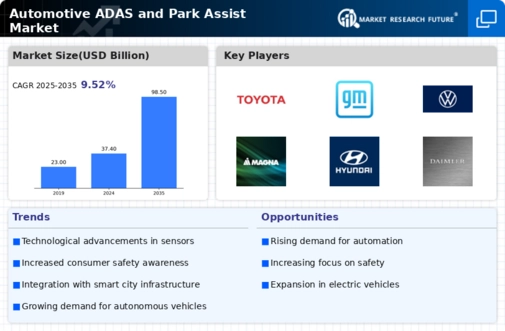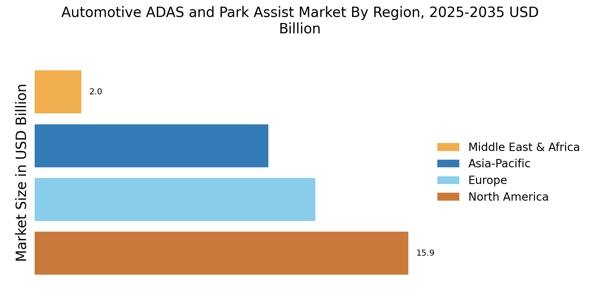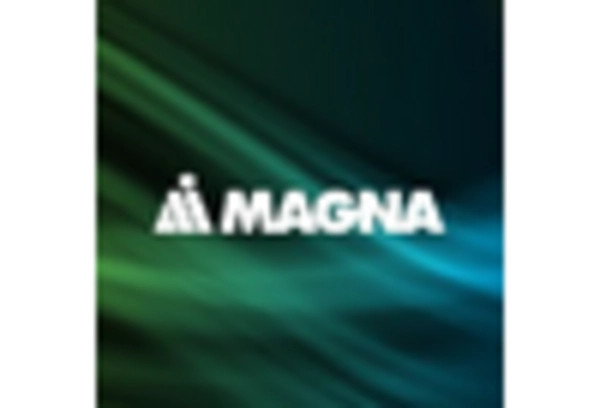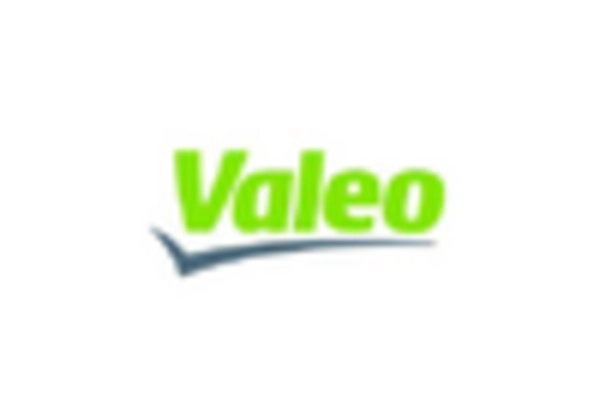The Automotive Adas And Park Assist Market is witnessing significant transformations driven by the increasing demand for safety, convenience, and enhanced user experience in vehicles. As drivers demand more automated features and greater assistance in driving, the competition among automotive manufacturers intensifies.
Players in this market focus on developing advanced driver-assistance systems (ADAS) that utilize technology such as sensors, cameras, and artificial intelligence to improve safety and automate parking processes.
The landscape is characterized by rapid technological advancements, evolving regulatory frameworks, and a growing emphasis on vehicle connectivity which together are shaping the strategies of companies engaged in this sector. Understanding the competitive dynamics of this market is crucial for stakeholders to make informed decisions and capitalize on emerging opportunities.
When considering the performance of Toyota within the Automotive Adas And Park Assist Market, the company stands out due to its commitment to innovation and safety. Toyota has consistently been at the forefront of integrating advanced safety technologies into its vehicle lineup.
With an array of features that enhance driver awareness and accident prevention, Toyota effectively positions itself as a leader in the market. The company's reputation for reliability also supports consumer confidence in its ADAS offers.
Moreover, Toyota has been investing heavily in research and development, focusing on electrification and connected vehicles, which not only strengthen their existing position but also pave the way for integrating advanced park assist functionalities
This strong market presence, combined with its emphasis on sustainable mobility solutions, underscores Toyota's strengths in the highly competitive landscape of automotive technologies.
General Motors has also established a significant footprint in the Automotive Adas And Park Assist Market, focusing on designing high-tech solutions that cater to modern user expectations. The company has made notable advancements in the field of autonomous driving technology and has integrated sophisticated park assist systems in several of its vehicle models.
General Motors leverages its vast experience and extensive research capabilities to continuously innovate and improve its safety systems, appealing to drivers who prioritize both convenience and security. The implementation of GM's Super Cruise, an advanced hands-free driving feature, exemplifies the company's dedication to evolving automotive technologies and enhancing driving experience.
By effectively combining their engineering expertise with strategic partnerships and increasingly sophisticated technological investments, General Motors is well-positioned to compete in this rapidly evolving market, addressing consumer needs for safety and automation at the same time.


















Leave a Comment